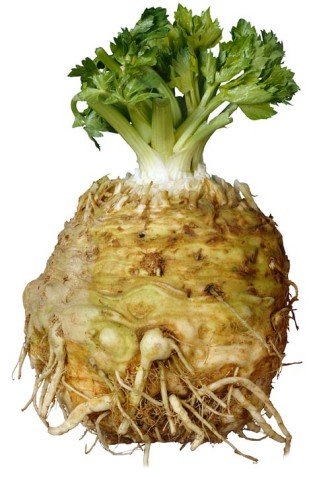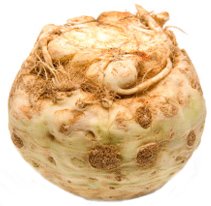

Celeriac

Apium graveolens variety rapaceum. Umbelliferae. A biennial usually grown for its celery-flavoured root. The foliage is like that of celery but it is distinguished by its globe-shaped, rather rough, knobbly root. Roots are ready to lift from autumn into early winter. They can be stored throughout winter, either in situ where they will tolerate ambient temperatures to –12ºC, or in boxes of sand in a cool dry shed. Cultivation is similar to that of self-blanching celery. Any side-shoots developing in the late summer when the roots begin to swell should be removed to encourage the formation of large individual roots. Celeriac can be shredded or cubed to be eaten in salad, or served boiled. The leaves may also be used fresh to flavour soups and stews. Cultivars are not very distinctive but ‘Claudia’ is recommended for its smooth non-branching roots. ‘Balder’ produces round, medium-sized roots. Some seedsmen divide cultivars into short-leaved (e.g. ‘Alabaster’, ‘Glabus’, ‘Marble Ball’ and Tellus’) and long-leaved (e.g. ‘Monarch’). Pests and diseases are similar to those of celery. Carrott fly larvae will sometimes tunnel into the roots.
|
Home
Grow Nuts
Grow Herbs
Grow Fruit
Cyberian Index
If you like this website and want one of your own contact
Cyberian All information correct at
time of publication and open to updates as necessary. No part of this website,
or its vectors, may be produced in any shape or form, using any type or design
of medium, system, equipment or otherwise without the prior written consensual
notice of the Cyberian. Any breach of these requirements will result in the
appropriate action. If in doubt, e-mail contact is recommended.
Some components of this website were obtained as open-source software and are
used in the same non-profit manner on this website.